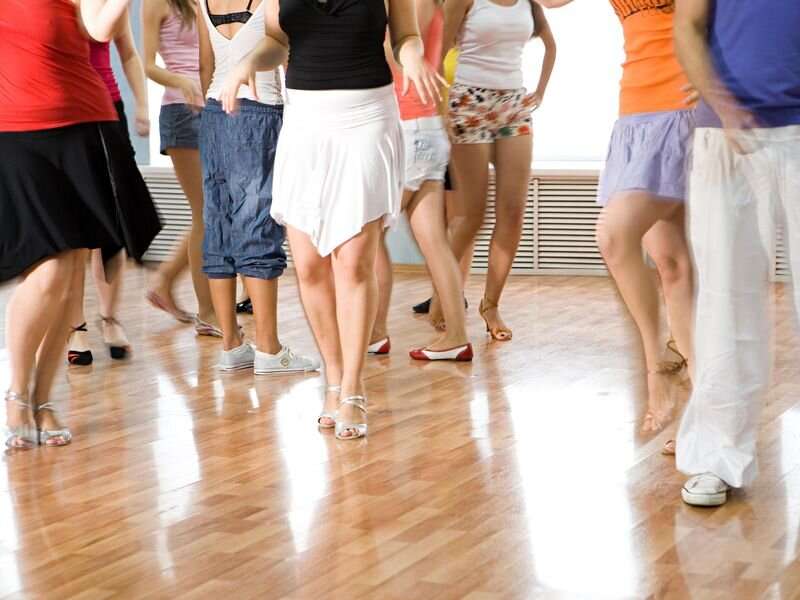This article has been reviewed according to Science X's editorial process and policies. Editors have highlighted the following attributes while ensuring the content's credibility:
fact-checked
reputable news agency
proofread
Dancing your way to better health

Someone who wants to work out, socialize and feel the beat at the same time may want to put on their dancing shoes.
Dancing has many health benefits, according to a doctor from the Hospital for Special Surgery in West Palm Beach, Fla., who is a competitive ballroom dancer.
"I have patients ranging in age from young children to 90-year-old adults who enjoy Latin and other styles of dancing," said Dr. Kathleen Davenport, a physiatrist who specializes in the nonsurgical treatment of orthopedic injuries and conditions, with special expertise in dance medicine. She is also company physician for the Miami City Ballet.
"Dancing checks a lot of boxes. In social dancing, you interact with different people and can make new friends, which has multiple psychological benefits," Davenport explained in a hospital news release. "On the physical side, you need good balance, you need core strength, you need strength in your lower and upper extremities if you're doing partner work. Dancing can also be an excellent cardio workout."
Physical exercise is also good for brain health, according to research.
"When dancing you need to remember the steps and how to do them," Davenport said. "We have found that dancing is beneficial for people of all ages as it can help keep memory active as we go through our years."
Good practices help prevent injury when beginning dancing for fitness and fun, and Davenport offers these tips:
- Take lessons to learn the correct steps and proper technique.
- Start slowly, ramping up gradually as you build muscle strength and endurance. Starting too fast can lead to injury.
- Warm up ahead of time, and then cool down after the dance with some gentle stretching.
- Listen to your body: Take a rest day if you're tired or skip an event if you overdid the dancing the day before. This can help avoid overuse injuries.
- As with any workout, it's important to stay hydrated.
- If you experience pain or a potential injury, however slight, leave the dance floor. You don't want to turn a minor problem into a major injury.
- Choose the right shoe for your style of dance. For Latin dancing, heels are generally recommended, but they're not the right shoe for all women. Choose the shoe that supports your activity and doesn't cause you pain.
- Check your dance shoes at least every two years or after recovering from a foot injury to make sure they still fit well.
- If you've taken a break, ease back into dancing, even if you're experienced.
- Consider wearing earplugs at a loud venue.
- You may also want to learn about dance etiquette. Studios and dance clubs often post helpful information on their websites.
For those who love it, dancing can just feel good, Davenport said.
"When you do something enjoyable, particularly physical exercise, endorphins are released, which are our 'happy' hormones," she said. "By releasing these hormones, our body encourages us to keep engaging in these activities."
More information: The American Academy of Orthopaedic Surgeons has more on starting an exercise routine.
Copyright © 2023 HealthDay. All rights reserved.



















